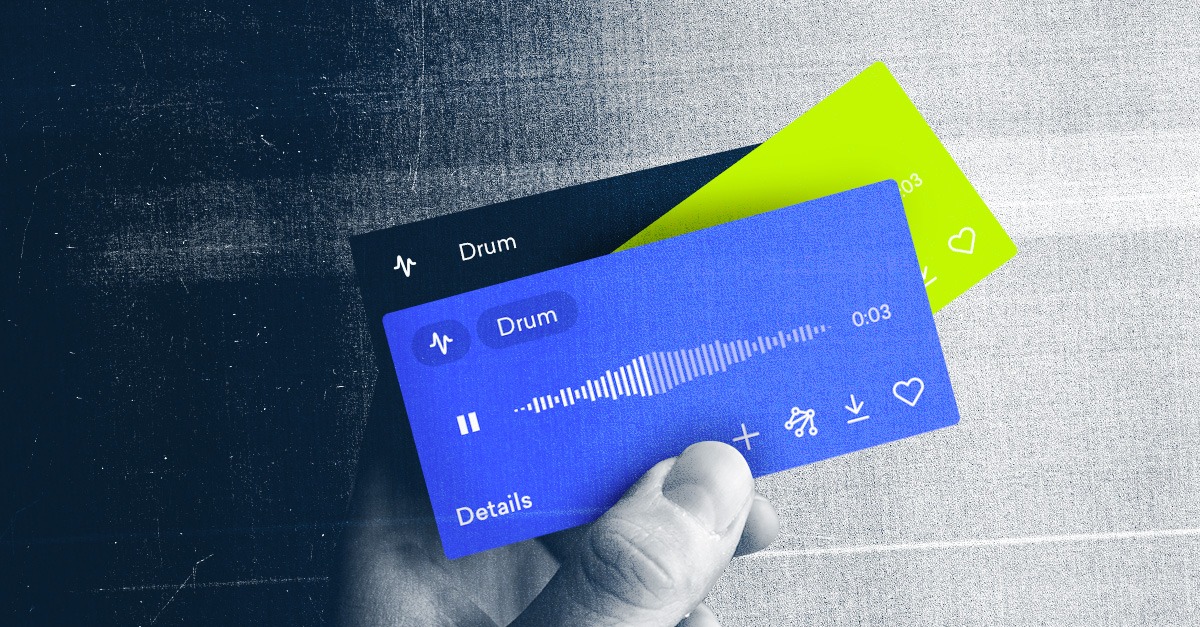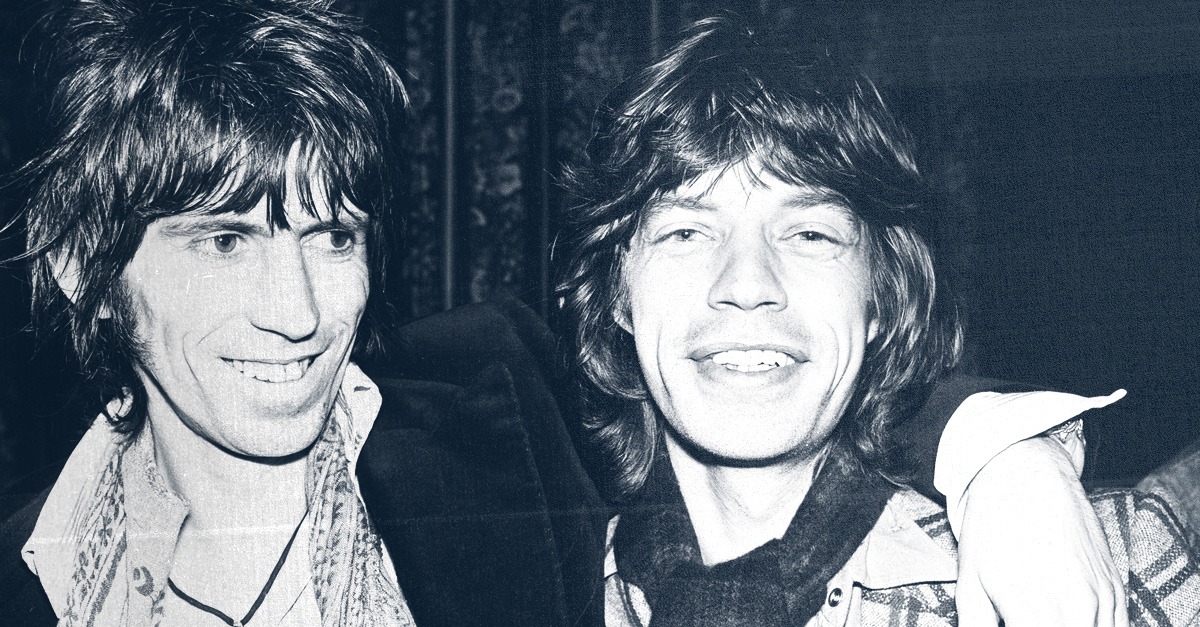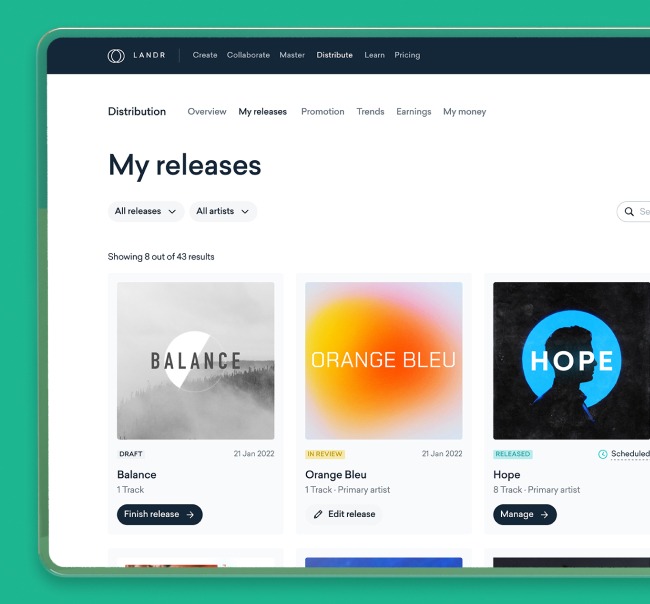
How to Clear Samples: The Business of Sample Clearance

"Your submission has been rejected due to possible copyright infringing material."
If you’ve ever received the above message from your digital distribution provider, you know how dispiriting and confusing it is.
The rules of copyright can be confounding – and infringement can have severe consequences. One examples of a high profile sample clearance case, all royalties from Ed Sheeran’s monster hit “Shape of You” were frozen, as a result of accusations of copying the chorus from Sam Chokri’s 2015 song “Oh Why.”
So how can you use sample clearance to prevent getting sued or rejected due to copyright infringement? What are the rules? What can you use? Does it matter if you can prove that you never heard the track in question?
In this article I’ll go through everything you need to know, including how to get sample clearance for a song.
How is each part of a song copyrighted?
If you’re wondering how to sample a song legally, the first question to ask yourself is: which part am I using – the composition, lyrics or recording (sampling)?
Composition copyrights: singing from the same hymn sheet
Once a song has had its first release, anyone can cover that song without asking permission. As long as you credit the writers and don’t change the song, you’re in the clear.
But incorporating part of someone else’s melody into your own composition requires sample clearance.
Incorporating part of someone else’s melody into your own composition requires sample clearance.
Despite what many songwriters believe, there’s no set number of notes that are acceptable. The emphasis tends to be on whether the notes are identifiable enough with the other song.
If a dispute goes to trial, your song doesn’t even have to have the same melody for you to be guilty of infringement. When a jury decided that Katy Perry’s Dark Horse resembled Flame’s Joyful Noise enough to warrant giving them credits on it, Perry and her songwriting team and label were forced to pay out $2.78m, sending shockwaves across the creative industry.
Many argued that the part of the song that was deemed too similar was the arrangement – not the composition. Others pointed out that the note progression was also similar to loads of other compositions, some going all the way back to Bach’s violin sonata in F minor (adagio).
Similarly, the melody of “Blurred Lines” was nothing like Marvin Gaye’s “Got to Give It Up.” But the arrangement and vibe was similar enough for a jury to order Robin Thicke and Pharrell to pay the Gaye estate $5m because they didn’t get sample clearance.
It also doesn’t matter if you’ve copied another melody on purpose or not. Sam Smith and his co-writers claimed they had never heard Tom Petty’s “I Won’t Back Down” – yet they acknowledged that their song “Stay With Me” was similar enough to give co-writing credits to Petty and his co-writer Jeff Lynne.
Lyric copyrights: not just text, but context
When it comes to lyrics, there is a bit more leeway for legal sampling.
If you search Spotify or Apple Music you’ll see that there’s no such thing as a unique title. It’s only if the lyrics are used in enough of a similar context or with similar notes to another song that you should ask permission and give credits.
A perfect example is Anne-Marie’s song “2002,” which credits a whopping 18 writers. This is due to its chorus, which includes lines such as: “Oops, I got 99 problems singing ‘bye, bye, bye’ / Hold up, if you wanna go and take a ride with me / Better hit me, baby, one more time,” referencing songs she was listening to as a young girl.
No prizes for figuring out which ones.

Recording copyrights: master ownership
To use any recorded work, not only do you need permission from the lyric and composition owners but since you’ll be using recorded material, you’ll also need permission from the master owners.
The masters of a song are owned by anyone involved in the creation of a recording and the record label whenever a record deal is involved.
You must get in contact with the master owners use a recorded work and you’ll likely have to pay a licensing fee or turnover some percentage of any royalties or profits earned from the song.
That’s why sample clearance can get very complicated, let’s take a look at the details behind the process of sample clearance.
Sample clearance: do it or lose it
Finally, there’s using a sample of a song. Sampling means incorporating a section of existing audio into your own song. Samples are often looped, modified and repurposed.
Thanks to modern technology and software like digital audio workstations (DAW), it’s easier than ever to sample a song.
But even if you’ve modified a sample beyond recognition, the legal rules are still clear-cut: You should always get sample clearance.
What is sample clearance?
Sample clearance is the process of obtaining permission to use a sample from the owners of the original audio.
It involves contacting the owner of the recording and the song (which can be different people) and asking for permission to use it.
If they say yes, you then negotiate how much of the copyright to your song you need to give them. Often you also have to pay them an up-front payment that can run into thousands of dollars.
When do I need sample clearance?
There are a lot of myths out there about how to sample music legally. You might think that if a sample is under a certain number of seconds, you don’t need clearance. Or if you’re not making money off your song. Or if you credit the original artist.
None of this is true. The simple fact is that any time you sample an existing song, you need sample clearance.
It doesn’t matter if you’re making money from the release or not. Claiming you’re only using the track for promotion does not exempt you from getting samples cleared.
Claiming you’re only using the track for promotion does not exempt you from getting samples cleared.
The length of the sample doesn’t matter either. Rapper Moses Pelham sampled a short drum sequence from Kraftwerk’s track “Metal on Metal” on his “Nur Mir,” and looped it.
Even though it was only a tiny sample, the court ruled in favour of Kraftwerk’s Ralf Hütter and against Pelham’s claim of “artistic freedom.” However, the European Court of Justice added that had Pelham manipulated the sample enough to make it unrecognizable, it wouldn’t have been infringement.
How to clear samples
OK, you know you need to get sample clearance. But few people have artists like Tracy Chapman, Sting or Lauryn Hill on speed dial. (Actually, you may want to stay away from sampling Sting if you want to keep a majority of your songwriting credit. The Police frontman famously demanded – and got – 100% of Puff Daddy’s “I’ll Be Missing You,” and 85% of Juice WRLD’s “Lucid Dreams.”)
Luckily, anyone can follow these basic tips for how to get sample clearance for a song.
1. Keep a record
Make it easy for yourself by making sure that you keep track of who you’re sampling from, by writing it down when you do it.
Make it easy for yourself by making sure that you keep track of who you’re sampling from, by writing it down when you do it.
Write down the part of the audio you’re using, the sample length, the number of times you use it in your song and your future plans for your song.
The more information you provide the rights holders, the better chance you’ll have of getting sample clearance.

2. Contact the rights holders
Think you understand copyright? Not so fast. When it comes to how to get sample clearance for a song, there are two rights holders involved: the owner of the recording (the master) and the owner of the song (the publishing).
You need to contact both the owner of the recording (the master) and the owner of the song (the publishing).
When The Verve sampled the strings from an Andrew Loog Oldham orchestral cover of the Rolling Stones’ “The Last Time,” they obtained the rights to use the six-note sample from the owner of the recording, Decca Records – but not from former Stones manager Allen Klein, who owned the rights to the song.
In the end The Verve had to give 100% of the songwriting credits to Mick Jagger and Keith Richards.
What might have happened if they had negotiated a deal before releasing the record?

3. Use a sample clearing expert
Perhaps The Verve should have used a sample clearing expert.
As you’ve probably gathered by now, legal sampling is a minefield. It isn’t something you should attempt on your own.
It’s not always easy to know who owns a copyright, who to reach out to and how. The artist may no longer be alive, and the record may belong to their estate.
Sample clearance also may only cover certain uses. Getting the right permissions, for example, “all audio configurations in perpetuity and worldwide,” is essential.
It’s also true that not all artists can afford big, fancy lawyers. In that case, the next rule is for you.
4. Use a royalty-free library
Don’t want to deal with the Stings and Allen Kleins of the music industry? Your best bet to clear samples online is a royalty-free library.
If you don’t know how to sample a song legally, subscribing to a royalty-free library takes away all of the hassles of sample clearance. Plus, it guarantees you can legally sample every sound you use in your tracks.
You can find all sorts of libraries online, including LANDR Samples, which provides access to millions of pre-cleared samples.
This is the easiest way for artists to avoid the final rule of sampling…
Where there’s a hit, there’s a writ.
Smart artists, such as Eminem, don’t take any chances and make sure every sample they use is cleared.
You may not bother with sample clearance, thinking that chances are slim that the artist you sampled will hear your track.
It’s true, no one bothers to sue over a track that only got a few hundred streams. But, conversely, as the music industry saying goes: where there’s a hit, there’s a writ.
So if I could give you one piece of advice, it is to ask permission from the person you may have copied before you’ve released the record.
As The Verve learned, once a track is released, you have absolutely no leverage when it comes to splits negotiations. Before the release you can still threaten to take the sample off the track.
However, to make it easier—and much cheaper— you can just join LANDR and use our bank of exclusive, premium samples and plugins.
The added bonus is that you don’t have to share your songwriting credits with the creators of the samples—and that means more revenue for your bottom line.
Gear guides, tips, tutorials, inspiration and more—delivered weekly.
Keep up with the LANDR Blog.




